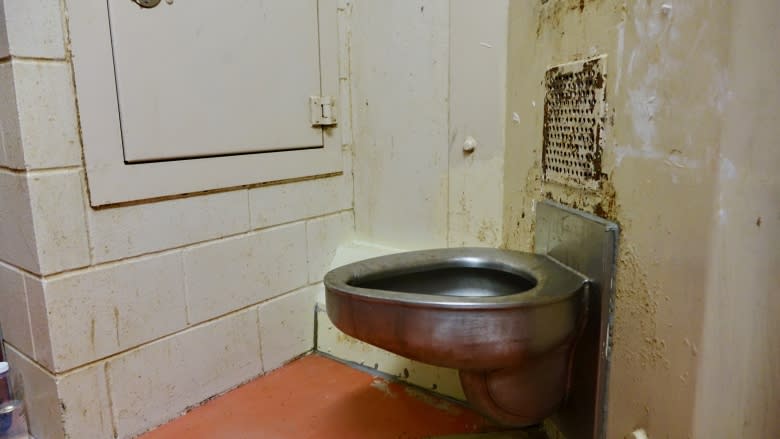A look inside the Ottawa-Carleton Detention Centre
For the first time in years, journalists got an inside look at the Ottawa-Carleton Detention Centre Thursday morning under strict rules. We were only allowed to bring a pen, paper and a camera to snap still images. Every photo was vetted by jail officials before media could leave the building.
We were told that for privacy and safety reasons — inmates, correctional officers and all staff at the jail were off limits to photograph.
I was one of a dozen members of the media on the tour who had a photo deleted because you could see a reflection of the jail's deputy superintendent in a window. Others reporters had a photo erased that featured an inmate's hand picking up a phone. We were told that any details — a tattoo, a haircut — could possibly give away someone's identity.
Surveillance cameras, locks and any security features were also out of bounds to document. We were moved through the facility at a quick pace with a handful of the building's staff and two ministry spokespeople.
Due to transfers, the jail was overcapacity — at 102 percent. We are told on average it's usually 87 to 90 percent on any given day now.
Reporters had been requesting to see inside the maximum security facility to view what inmates described as deplorable conditions and overcrowding last March.
The tour coincided with the release of a progress report Thursday updating the status of changes being made to the conditions in the jail.
"I think it was important to let media as well as the general public through you folks to see what's changed, what's new, what's moved forward on," said Greg Flood with the Ministry of Community Safety and Correctional Services.
Inmates complained in March that due to overcrowding they were forced to sleep on the ground of this bathroom floor. One man CBC News interviewed said the jail squeezed four men in a room like this and that the ground was wet and bugs crawled on him, he said.
Superintendent Mike Wood walks media down a hallway in the maximum security section of the facility passing by food carts.
The OCDC received the province's first body scanner in August to bolster the jail's security and prevent people from smuggling in drugs and weapons.
Inmates are now given free shoes to wear in the shower if they can't afford to buy their own.
This area of the jail currently used for overcrowding will soon be turned into a wing for people with special mental health needs.
Currently, there are 67 cells that do not have hatches at the OCDC. Guards complained it was dangerous that they have to open the door to give inmates food. The task force's progress report notes that the jail will be getting these hatches in the future.
The intake room where inmates wait to be processed when coming in or out of the jail. This is also the area where they wait for their video remand appearances.
The jail's maximum security yard. Since hiring more correctional officers, there have been fewer lockdowns. The superintendent of the facility says that they've also hired more correctional officers allowing inmates to go outside more in the jail's five recreational yards.
The segregated outdoor space near the "pod" that houses six units with 16 people in each unit.












